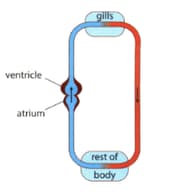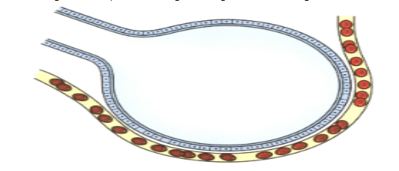Embibe Experts Solutions for Chapter: Transportation in Animals and Plants, Exercise 1: Exercise
Embibe Experts Science Solutions for Exercise - Embibe Experts Solutions for Chapter: Transportation in Animals and Plants, Exercise 1: Exercise
Attempt the free practice questions on Chapter 11: Transportation in Animals and Plants, Exercise 1: Exercise with hints and solutions to strengthen your understanding. THINK ABOVE AND BEYOND SCIENCE PRACTICE BOOKS solutions are prepared by Experienced Embibe Experts.
Questions from Embibe Experts Solutions for Chapter: Transportation in Animals and Plants, Exercise 1: Exercise with Hints & Solutions
Blood vessels circulate blood throughout your body. They help deliver oxygen to vital organs and tissues, and also remove waste products. Blood vessels include veins, arteries and capillaries. The arteries are thick-walled blood vessels that carry oxygenated blood from the heart to the body organs. We compare arteries with trees which divide into smaller and smaller branches. Do you think it is true?Explain

The above diagram represents the circulatory system of aquatic animals. Identify the circulatory system. And also discuss how it differs from the circulatory system of mammals. How these differences could relate to the different requirements of an aquatic animal and a mammal.
Why does water not enter our body through skin due to osmosis when we take a bath?
The afferent arteriole is the arteriole that brings blood to the glomerulus. The efferent arteriole is the arteriole that carries blood away from the glomerulus. The diameter of the efferent arteriole is less than that of the afferent arteriole. What will be the consequences if the opposite structural quality will be performed by them?
Kidney transplantation is an ultimate procedure which is suggested for those patients who are undergoing haemodialysis for a longer period of time and whose one or both kidneys have failed. For carrying out this process, a suitable donor or closely related person from the family of the patient is chosen to donate the kidney. Do you think a donor can survive her life with a single kidney without any complications?
The transport system in plants consists of two kinds of tissues A and B. The tissue A is made up of living cells and consists of two components P and Q. Component P has tiny pores in its end walls and contains only cytoplasm but no nucleus. On the other hand, component Q has cytoplasm as well as nucleus. The tissue B is made up of dead cells and consists of two components R and S. Component R has open ends whereas component S does not have open ends. In flowering plants, either only R or both R and S transport water but S is the only water-conducting tissue in non-flowering plants.
What is (i) tissue A and B (ii) component P, Q, R and S?

The above diagram represents the enlarged portion of part of a lung where gaseous exchange occurs. What is this part called? Explain why red blood cells are not all the same colour in the diagram?
Temperature is an external factor that influences the speed of diffusion. Generally, it is seen that plants are more likely to wilt in very hot weather. Do you think any relation exists in between? Explain your answer.
